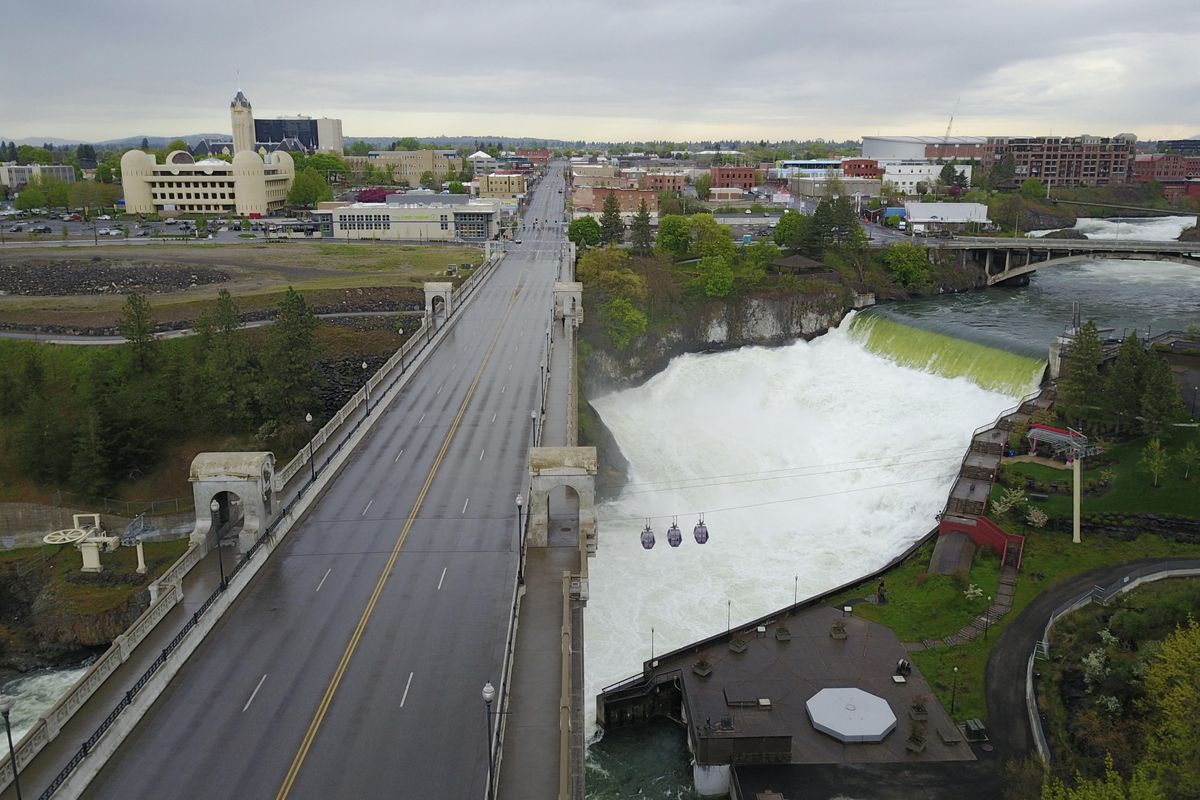Then and Now: The steel Monroe Street Bridge, 1892-1909

In the 1870s, the north side of the Spokane River was difficult to reach. The safest crossing was by boat in the area of present day Division Street.
The first bridge in the downtown area was the Howard Street Bridge over the south channel. Because the city was unincorporated and no taxes levied, money was raised by “subscription,” or voluntary donation toward future use.
But the gorge above the lower falls presented a technical challenge. Any span connecting Monroe Street would have to be more than 120 feet above the water with carefully placed footings to withstand the river’s spring flows.
The first Monroe Street bridge, built by Spokane Cable Railway and partners, cost $42,000 and opened in 1889. It carried early electric street cars. It burned a year later, possibly due to overheated electric cables running through the bridge framing. The city, which was paying a hefty subscription fee for public use, questioned the safety of the structure.
A new bridge, made of steel, opened for use in 1892. One of the first people to cross the new bridge was famous French actress Sarah Bernhardt, who was in Spokane to play the stage at the new Auditorium Building.
But the steel bridge, while inspiring more confidence than the wooden version, still shuddered and vibrated when the street cars crossed. William H. Burr, a famous engineer hired by the city to evaluate the bridge, gave it a bleak review in 1907. The steel was weak and the foundations questionable. Better to start over.
The city closed the bridge in January 1910 and took almost two years to build a new concrete structure. City engineer J.C. Ralston and his staff designed the structure and architect Kirtland Cutter designed the four small pavilions decorated with concrete bison skulls.
Each of the skull sculptures was lit by three light bulbs which were being broken almost daily at a cost to the city of $100 per month. The vandals were young men wanting the kiosks darker, the newspaper wrote, because “Many a young swain stops on the bridge, near the falls to kiss his girl.” The city stopped replacing them in 1925.